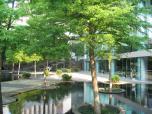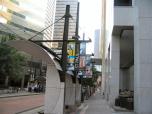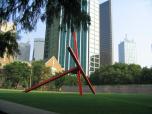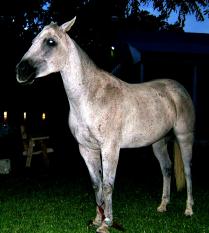




In my growing up years, going to camp was one of my favorite activities as it meant being out in the country, meeting new friends, and doing activities that I did not often get to do growing up in the middle of a large city. One of those activities was horseback riding. I have to admit that I was not always a fan of riding as my first experience on a horse holding on to the back of my father, ended with me falling off the back of the horse, when it went into a trot, and landing on the ground. After some years however, the trauma of that experience faded, and I began to appreciate when we would go into a trot or an occasional gallop.
Living in the White Rock Lake area of Dallas, my wife and I have the best of several worlds in that we are close enough to cultural attractions and interesting hole in the wall restaurants that are unique, while also being within walking distance of Dallas’ primary lake and thousands of acres of park land. While I have ridden my bicycle on occasion on the trails around the lake, I have often thought about what it would be like to ride a horse around it. Well, in all actuality if one owns a horse and happens to board it at one of several equestrian centers in Dallas, Park Lane Equestrian Center located in Lake Highlands, being one of them, he can actually ride on trails and several hundred acres of land near the center and eventually down and around White Rock Lake. (If you do not own a horse, you can go to the Park Lane Equestrian center and take a lesson for $80/hour, but you will stay on their property in one of their sheds.) One day I went over and sat down with Melanie Hammer, the Barn Manager for the Center, and asked her some questions to improve my understanding of the equestrian business.
Melanie told me that horseback riding is a great form of exercise. There are a number of children who come to their facility to ride. They have home school groups that come to the Equestrian Center, as well as students from the Highland Park ISD who come to the center for their physical education credit. I have seen the charts comparing how many calories one burns during an hour comparing running, bicycling, and swimming. When one rides a horse, one burns 600 calories per hour on average.
I was wondering if there was a correlation between a city’s commitment to parks, recreation and nature and the geographic location where an equestrian center decides to build and operate. Melanie told me that clients are attracted to the Park Lane Equestrian Center due to its proximity to White Rock Lake. People board their horses there and then ride them to the lake.
That prompted me to ask her about the interaction of horses with bicyclists who heavily travel the northeast Dallas area along and near the White Rock Trail, as well as the interaction of horses with motor vehicles. She said that horses tend to be scared of both. Fortunately, their riders are able to get to White Rock Lake from their property without encountering many bicycles or cars.
I did a little bit of research and discovered that while the City of Dallas allows horseback riding at White Rock Lake, the Dallas Park and Recreation Department discourages the use of horses on the hike and bike trail, and there are no actual horseback riding trails at the lake. There are plenty of turf areas around the lake and shoreline area that can be used for horseback riding however. If someone drives to the lake with his horse, he may choose any parking lot around the lake to park and unload their horse, but some of the parking lots on the east side of the lake are not as highly used as on the west side, and may be a better choice.
Back to the Park Lane Equestrian Center itself; it is located on a stretch of Park Lane in Northeast Dallas that backs up to several hundred acres of parkland. The land which the center is on, was a cattle ranch as recently as the 1990’s. It is a lovely area of nature on the edge of the Lake Highlands neighborhood. That type of environment is something many city dwellers do not have the fortune to experience that often anymore as our metropolitan areas have been built out further and further from the city centers, and infill development has occurred on much of what remains of urban land. Their business is well placed to capitalize on the demand of business owners and affluent clientele, particularly from the Park Cities, as well as other in town neighborhoods who love the equestrian life and need a place to board their horse. It is not cheap to do so, to board a horse at their location costs $600 per month and the total annual cost including other things such as healthcare and feeding is $8,400 per year.
Seeing the service that they provide to affluent city clientele and the beautiful setting in which they are located, I asked Melanie’s opinion on the future of equestrian centers in urban areas of the US. She felt that this business was dying out due to the increased cost of land and how it did not make economic sense keeping hundreds of acres of land as agricultural use when there was so much more demand for commercial development.
Though that made me wince as that area is so incredibly pretty for Dallas, I definitely understood, knowing the demands that exist in Dallas for development. It got me to ask myself though about what opportunities children and teenagers have today who live in the middle of a big city, particularly in poverty stricken neighborhoods, to really get out and experience some of the simple pleasures that I did growing up, or have the opportunity to learn some of the life lessons that our grandparents learned who grew up on a farm and cared for livestock.
In order to get a better idea about the environment these children are in and how opportunities might be geared toward them, I spoke with a couple of friends of mine who have mentored youth from the inner city and received the following answer from one of them:
“Some of the problems I see among the children stem from the fact that they come from broken families. It is so rare to see a mom, dad, and children all together. The fathers are the ones who are usually absent. I feel so many of the issues flow from this. Children are often times just not parented. A poor education culture also exists. One can't just point blame at schools and teachers. The overall culture is one which seems to not place much value on education. There are few role models for children to look at who have had a positive experience in education and/or who have experienced higher education.”
Obviously in situations like that, few families will have the disposable income to provide any opportunities for their child’s stimulation, particularly as it relates to nature and the simpler pleasures of the outdoors.
One comment the other friend made was that a big issue he’d seen was provocation. He said individuals need to be instructed to turn the other cheek and learn to build walls in order to keep their tempers in check.
I asked Melanie what horses taught a person. She stated that they taught patience, hard work, gentleness, adaptability and compassion. That was similar to the answers I received from doing a bit of Internet research
I still wanted to know how underprivileged children have learned and benefited from their interaction with horses. I discovered a program called Work to Ride in the Philadelphia area. They aid disadvantaged urban youth through activities centered on horsemanship, equine sports and education. It is located in Fairmount Park, a setting providing a unique opportunity to bring people into contact with animals and nature. Participants develop discipline, responsibility, and life skills through training, riding, and performing horse care and barn management tasks. They also develop confidence, self-esteem, and the skills necessary to compete successfully in their chosen activities. The youth are allowed to choose among various horse sports. Most are trained and talented in several sports with polo proving to be the favorite. In addition to acquisition of life-skills, Work to Ride also emphasizes the necessity of academic achievement. Staff and volunteers provide after school tutoring to help students maintain the passing grades required for program participation.
As I consider the benefits of that program, I ask myself again: What is the future for equestrian centers in and around Dallas? If Melanie’s prognosis is correct, land costs may force the remaining facilities to close and possibly move to areas further away from the central city where costs are cheaper. At the same time, the City of Dallas is planning for an equestrian center as part of its Great Trinity Forest Master Plan. According to its concept an equestrian center will be located in the Trinity Forest. Equestrian trails in the forest are also planned. This facility will be available to both local equestrian enthusiasts and tourists, it can provide opportunities for those interested in entertainment for a few hours or an entire day.
Obviously, that is a start. Since agricultural zoning however is an unproductive use of land in a major city, I finish this article with the following question: ‘With our culture’s current fascination with enabling people to connect with a natural environment, can zoning be put into place to allow a mix of activities that enable privately owned equestrian centers to make a profit and stay in business in the heart of metropolitan areas and serve the needs of all socio-economic groups?’
Urban Hooves
Posted: February 28, 2012 by Chuck DeShazo
